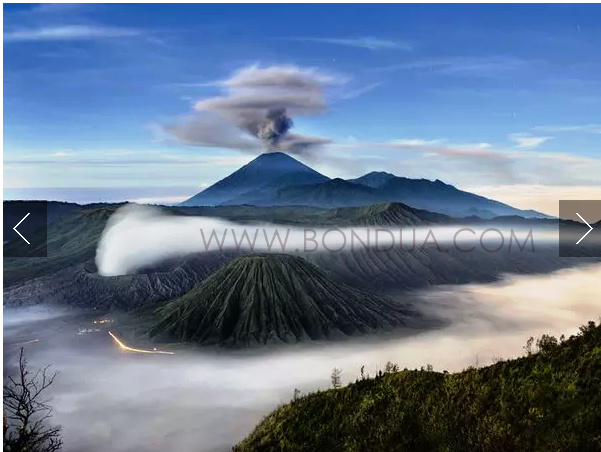
1. Three Volcanoes
Mount Semeru, seen with an ash plume, is the highest volcano on the Indonesian island of Java and has been in a constant eruption since 1967. It lies at the southern end of the Tengger caldera, which contains smaller volcanoes Mount Bromo and Mount Batok (both seen in the foreground), and several others.
With a hiss of steam, lava flows into the Pacific Ocean in Hawaii Volcanoes National Park, Hawaii. Similar flows of molten rock have built up the Hawaiian islands over the course of more than 70 million years.
Perched above the lighted city of Catania, Italy, Mount Etna hurls a fountain of fire skyward as rivers of lava spill down its flanks. In spite of its dazzling displays, Mount Etna is a relatively safe volcano with rare, compact eruptions and slow-flowing lava that gives people a chance to escape.
A few hundred degrees separates this pool of fiery orange magma in Italy’s Mount Etna from its hardened, gray crust. At nearly 11,000 feet (3,353 meters), Mount Etna is Europe’s highest active volcano.
A bright bolt of lightning crackles within the ash cloud from the eruption of the Eyjafjallajökull volcano in Iceland in April 2010. Volcanic lightning occurs when roiling ash particles rub against each other and become electrically charged.
A wisp of smoke escapes from Mount St. Helens’ dramatic eggshell-shaped crater after an eruption. Washington State’s volcano is most famous for its catastrophic 1980 eruption that killed 57 people, destroyed homes, bridges, and highways, and triggered an enormous debris avalanche that carved a mile-wide (1.6-kilometer-wide) crater on the mountain.
Climbers mount whorls of lava on the caldera of Ethiopia’s Ertale Volcano as steam escapes from a lava lake in the volcano’s crater, which can reach temperatures of 1,868°F (1,020°C).
A pool of mud boils near Dallol Volcano, in Ethiopia’s remote Danakil Depression. Volcanic explosion craters such as Dallol form during phreatic eruptions—where rising magma comes into contact with water beneath the surface of the Earth, causing a steam explosion.
Cleveland Volcano releases a plume of ash that rises almost 20,000 feet (6,000 meters) above the North Pacific Ocean in this aerial photograph. Cleveland Volcano, located in the Aleutian Islands southwest of Alaska, failed to produce an eruption and the plume of ash detached from the volcano two hours after it formed.
Pahoehoe lava flows on Kilauea volcano in Hawaii Volcanoes National Park. Unlike aa (pronounced “ah ah”) lava, pahoehoe flows relatively slowly, allowing an insulating skin to form that keeps the temperature close to 2,190°F (about 1,200°C). Aa lava, on the other hand, moves faster and doesn’t have time to develop a skin, resulting in a cooler flow with a more angular texture.
A stream of neon-orange lava cascades down Ol Doinyo Lengai, in Tanzania’s Great Rift Valley. Ol Doinyo Lengai, "Mountain of God" in the language of the Maasai, is the only volcano in the world erupting natrocarbonatite lava, an extremely fluid lava that contains almost no silicon.
A whisk fern grows from recently cooled lava in Hawaii Volcanoes National Park, Hawaii. Plants can return rapidly to areas affected by volcanic eruptions. Over time, lava and ash break down to form fertile soils ideal for agriculture.
A volcanic eruption and the eruption of light from charged particles in the atmosphere—called the Northern Lights—occur at the same time in Iceland. The island nation was created by volcanic activity and today has 35 active volcanoes, which provide the country with plentiful geothermal power.
Geese fly past the ash cloud from the eruption of the Eyjafjallajökull volcano that began in April 2010. Ash from the volcano disrupted air traffic in Europe for more than a month.
Stars whirl in the sky in a long-exposure photo of Mount Damavand in Iran. The mountain, which is part of the Elburz mountain range south of the Caspian Sea, is the highest volcano in Asia and the highest peak in the Middle East.
Gas bubbles up from the bottom of Laacher See (or Lake Laach) in Germany. A violent prehistoric eruption caused the Earth's crust to collapse and form a crater that filled with water. The lake lies in an area of Western Germany called the Eifel volcanic field.
The Arenal Volcano in Costa Rica erupts suddenly in February 2010, turning the sky an ominous yellow-brown. The volcano is one of the most active in the world.
Lights illuminate the Thurston Lava Tube in the Hawaii Volcanoes National Park. Lava tubes serve as underground pipelines, allowing molten rock to flow under and away from volcanoes.
Lava flows into a valley in southern Iceland near the Eyjafjallajökull volcano.

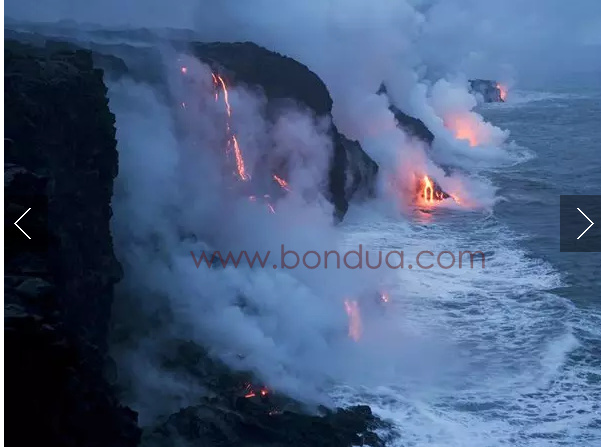
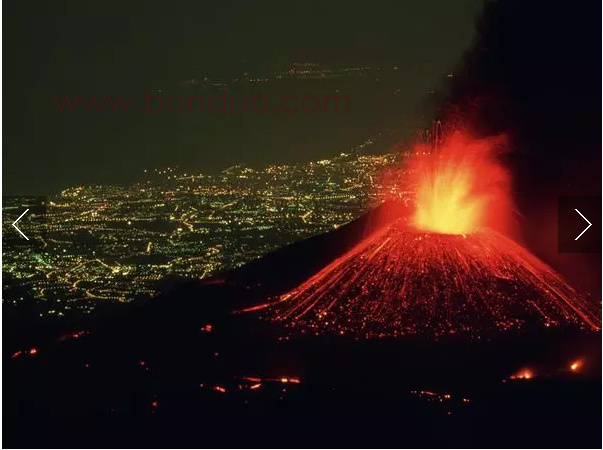
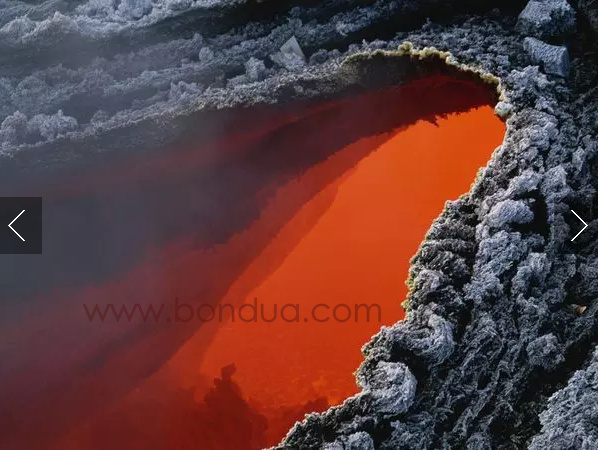
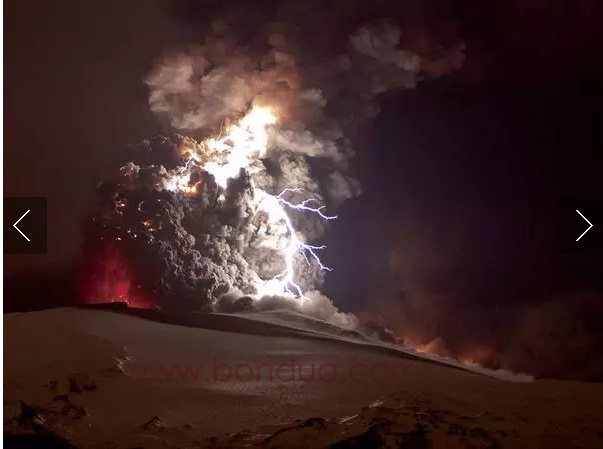
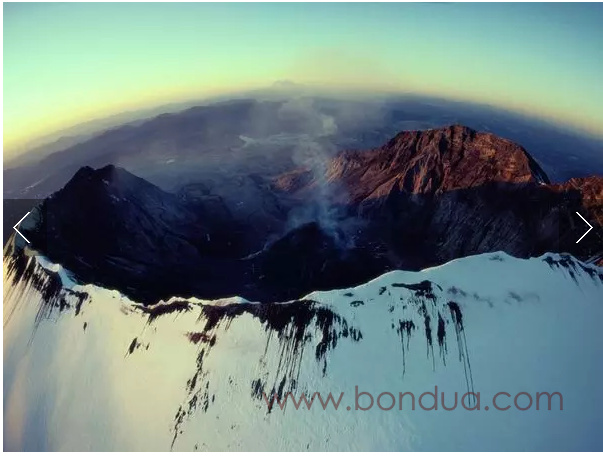
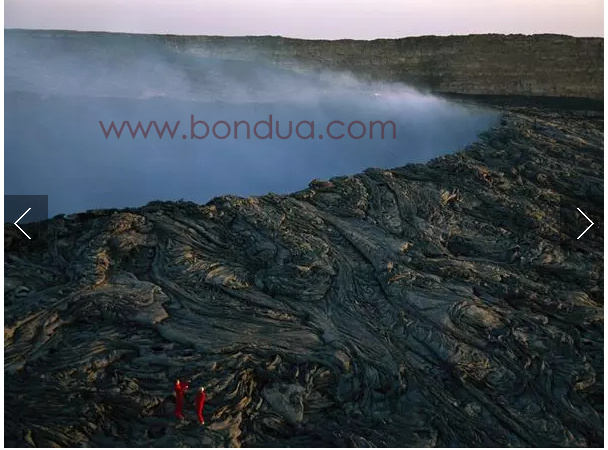
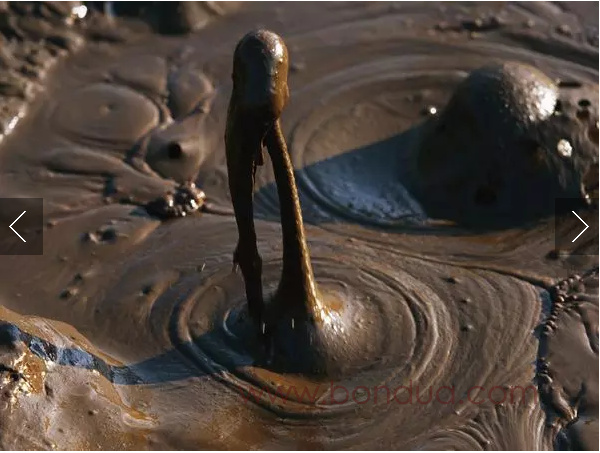
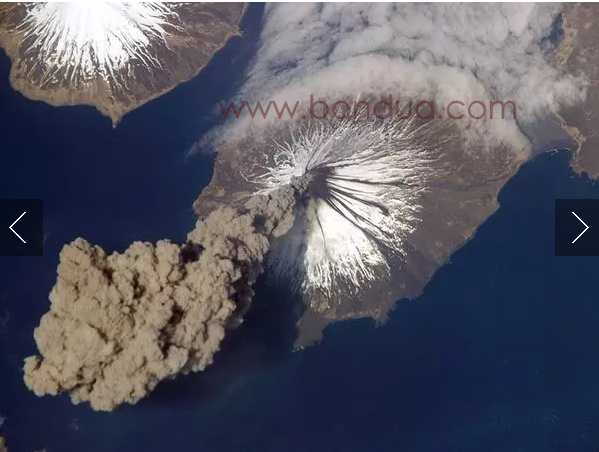
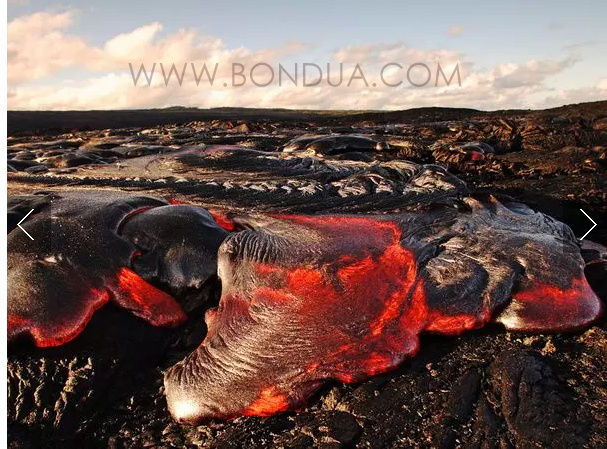
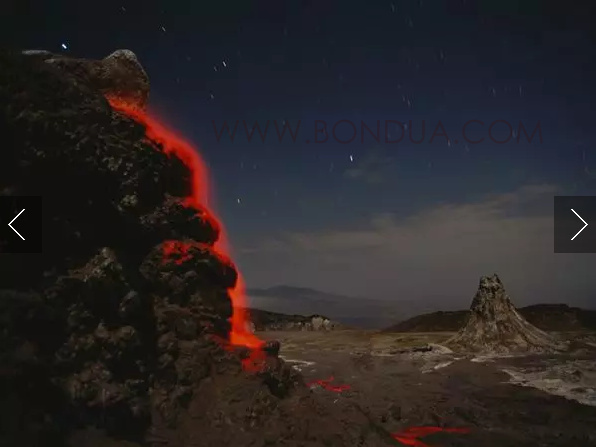
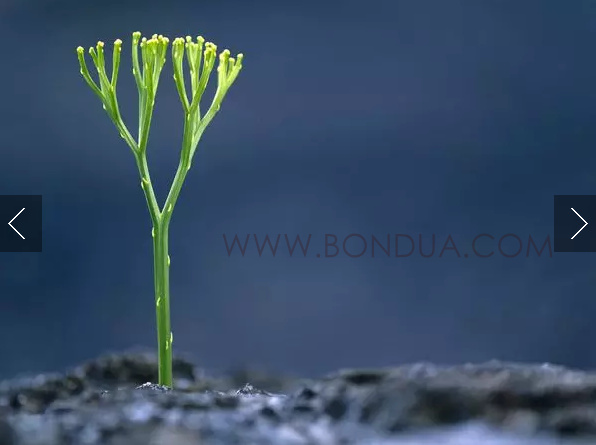
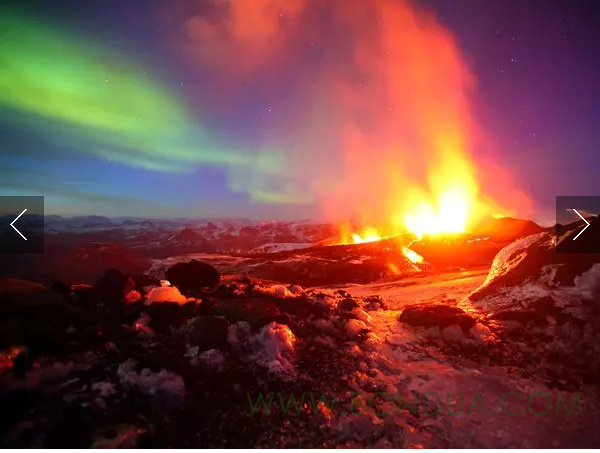
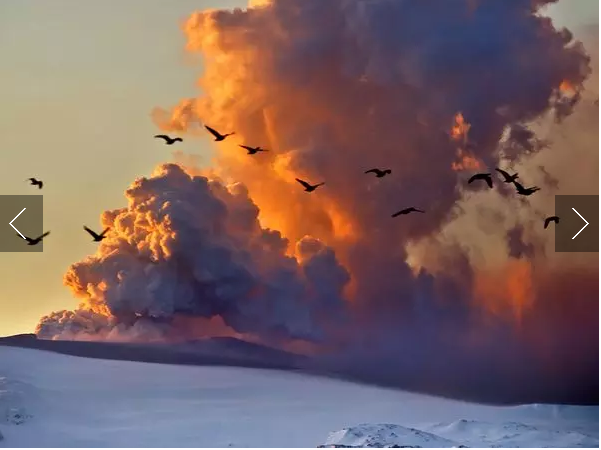
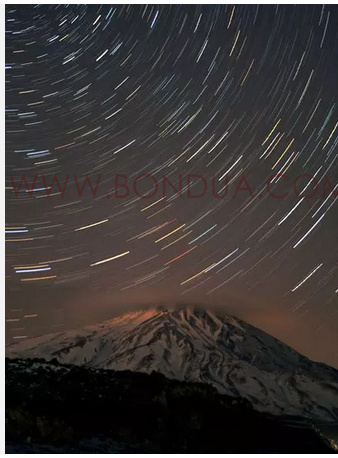
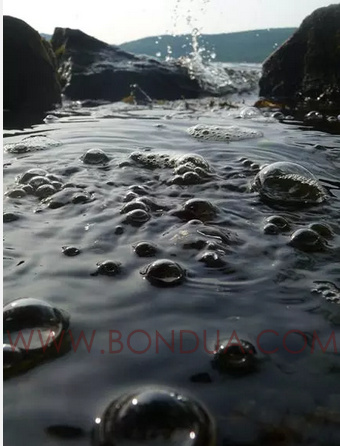
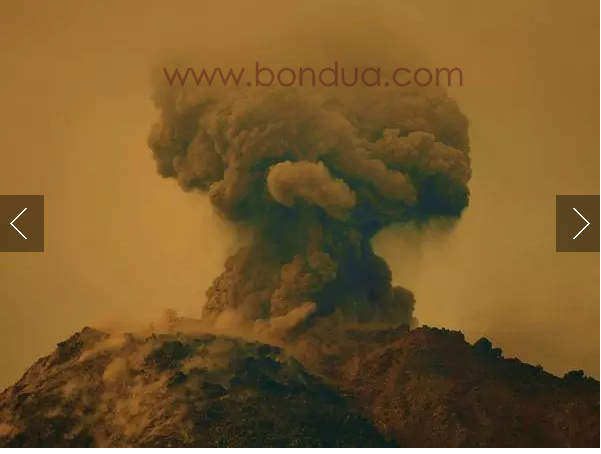
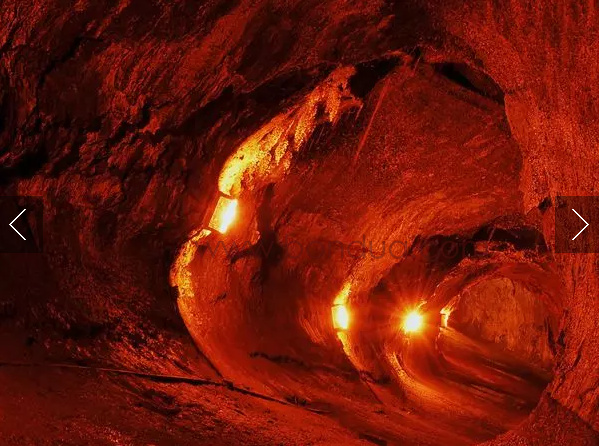
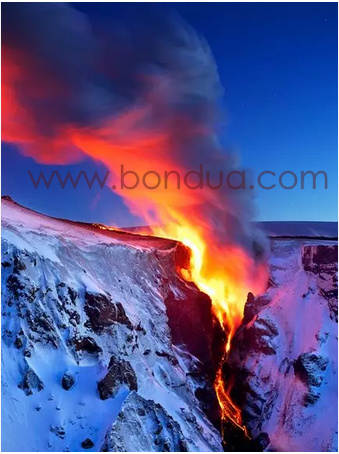
Post a Comment